Infinity, dear brothers, extends not only outward to the reaches of that clear blue sky… but also inward, to the heart of each human being. E. Urner Goodman 1975 NOAC closing address.
Goodman lived in an era of great change – from horse and buggy days to men on the moon. He also lived a life of great change. He knew much joy – a good childhood with friends and family, a successful career, a loving wife, three wonderful children and the lifelong inspiration of his faith. He also knew much tragedy – the death of his mother and aunt when he was a little boy, months of quarantine for diphtheria, tuberculosis as a young man, and the death of his son George in World War II.
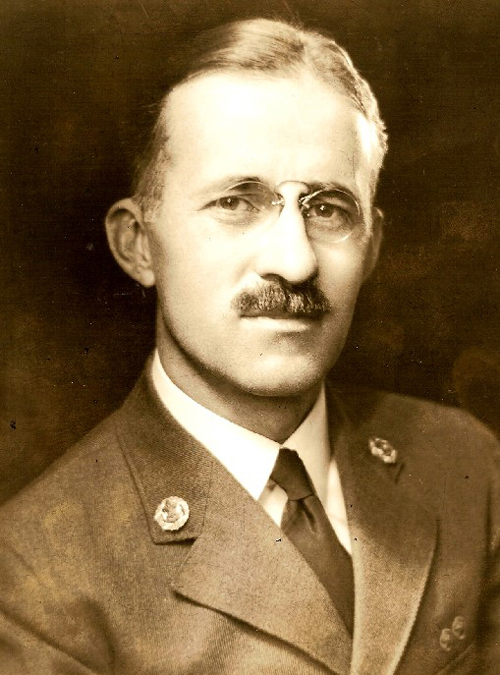 Like the hero of Baden-Powell’s favorite play, Peter Pan, Goodman was one of the many men who sought to put off growing up by engaging in a life’s work consumed with the things of boyhood – outdoor fun among good friends, acting chivalrous by helping others, giving everyone a chance to play, being loud and silly. Thus was the Scouter rewarded in his work with youth.
Like the hero of Baden-Powell’s favorite play, Peter Pan, Goodman was one of the many men who sought to put off growing up by engaging in a life’s work consumed with the things of boyhood – outdoor fun among good friends, acting chivalrous by helping others, giving everyone a chance to play, being loud and silly. Thus was the Scouter rewarded in his work with youth.
He had mastered the art of leadership, and had success after success professionally and with the Order of the Arrow, because he gave away to others the opportunity to be in charge, to exercise authority, to be creative, to take responsibility.
He was loved by all because of his self-effacing manner and his desire to do what was best for others, putting his own needs last. Always a peacemaker among Scouters, George’s death convinced him that world brotherhood was a worthy goal.
As he said at the end of his career with BSA:
I had indeed found my life mission… . Those 36 years of professional service, 16 years as Executive in Philadelphia and Chicago, and 20 years as national program director, brought rich rewards, far beyond any salary considerations. They represented the work, above all others, that I wanted to do.
1, Founders, Goodman, OA, Profile, Scouting
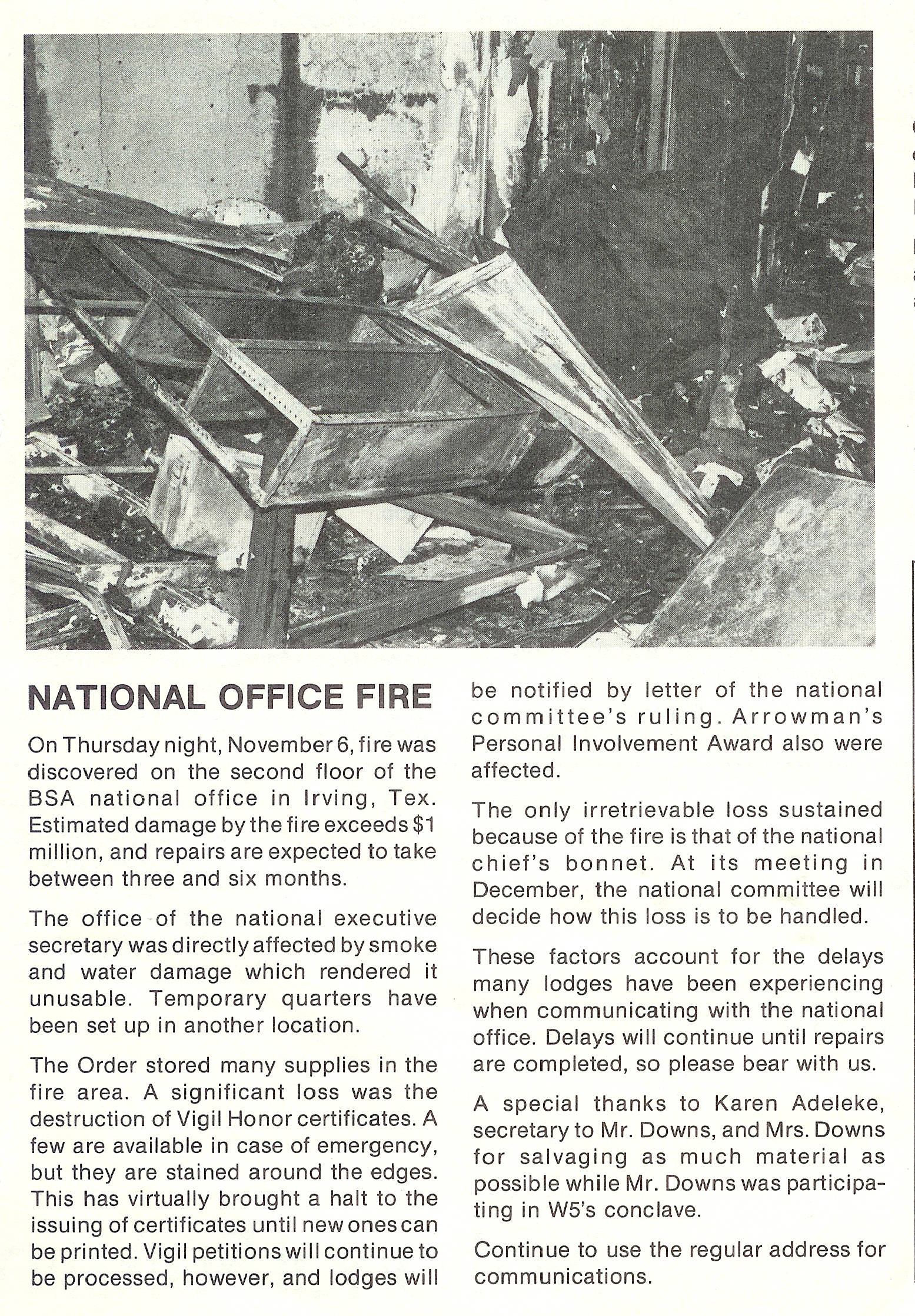 . A young security guard whose intention was to be the ‘big hero’ by discovering and extinguishing the fire deliberately set the blaze. Unfortunately, the fire quickly got out of his control and into an area that housed many of the Order’s records and memorabilia, including the national chief’s bonnet. The National OA Committee immediately announced their decision to construct two new bonnets for its national officers. One to replace the chief’s bonnet and for the first time a bonnet for the national vice chief. The replacement bonnets were completed in 1982
. A young security guard whose intention was to be the ‘big hero’ by discovering and extinguishing the fire deliberately set the blaze. Unfortunately, the fire quickly got out of his control and into an area that housed many of the Order’s records and memorabilia, including the national chief’s bonnet. The National OA Committee immediately announced their decision to construct two new bonnets for its national officers. One to replace the chief’s bonnet and for the first time a bonnet for the national vice chief. The replacement bonnets were completed in 1982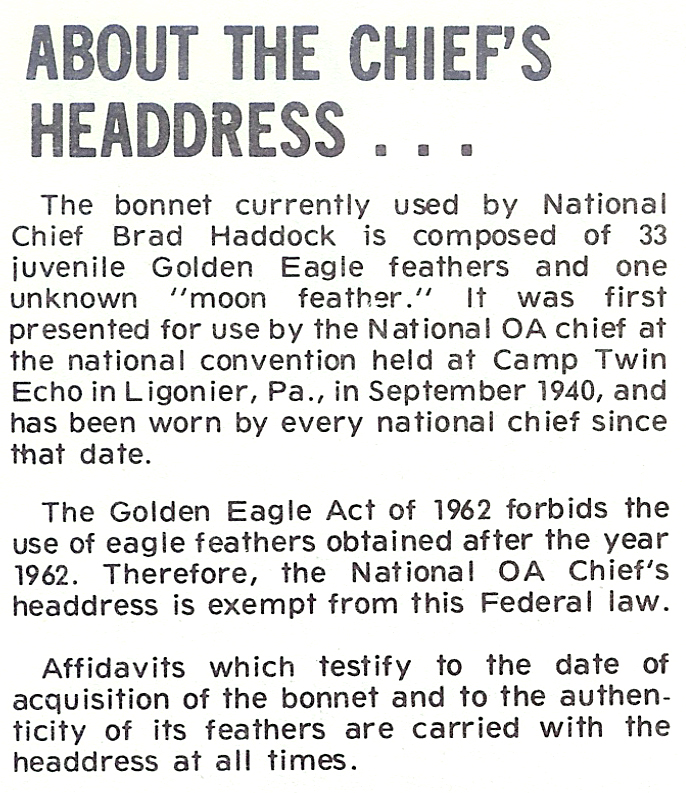 .
.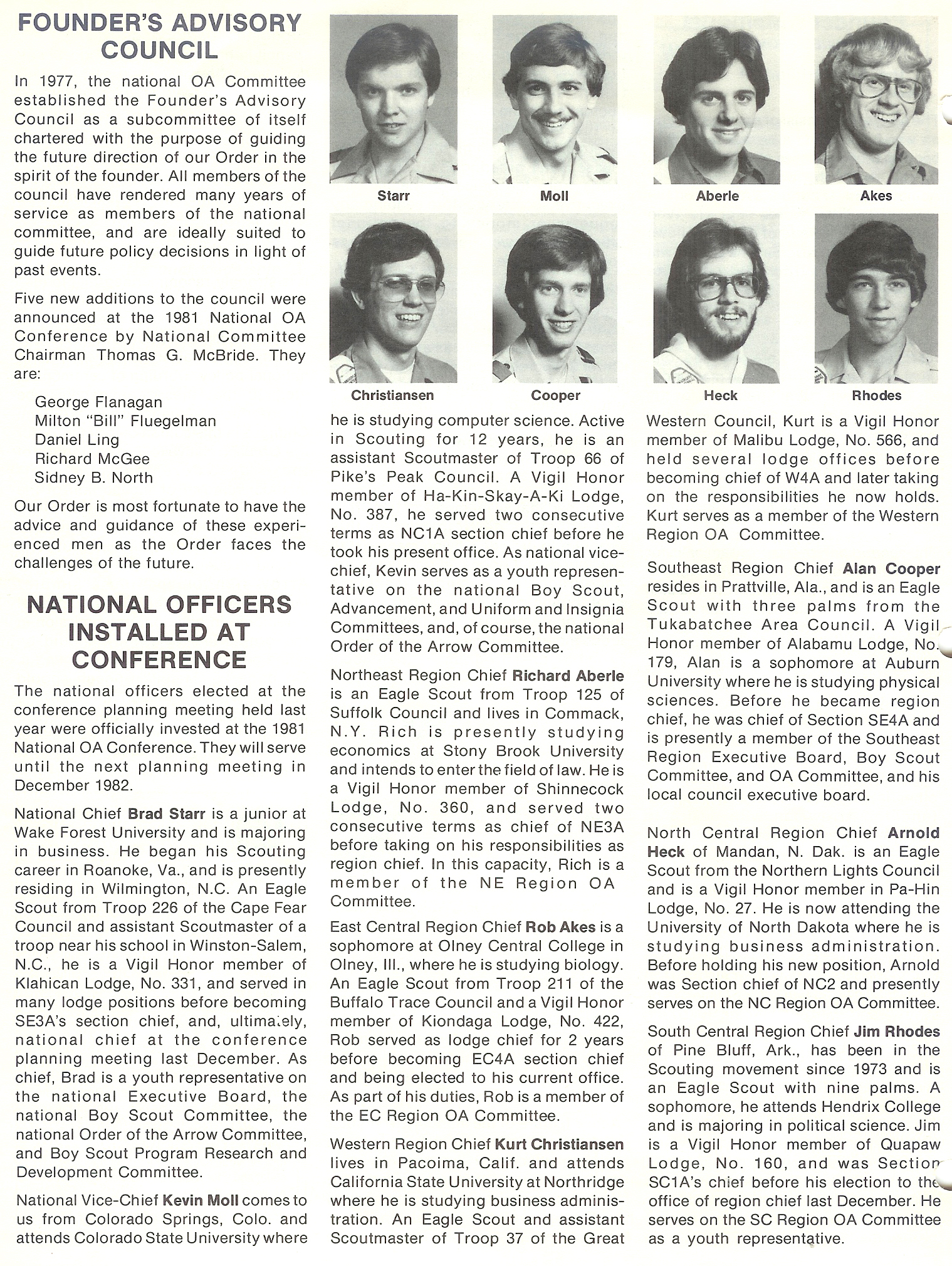
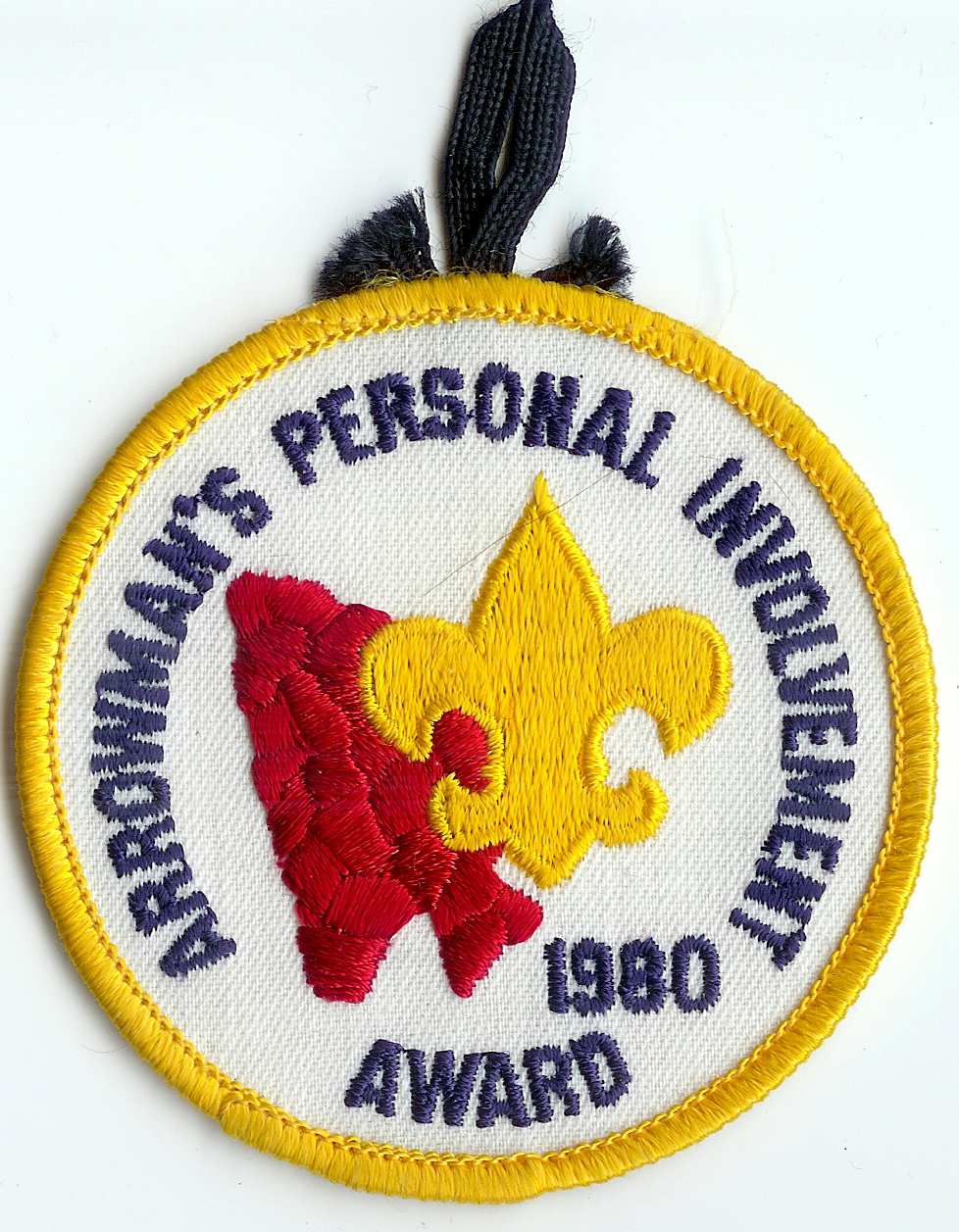
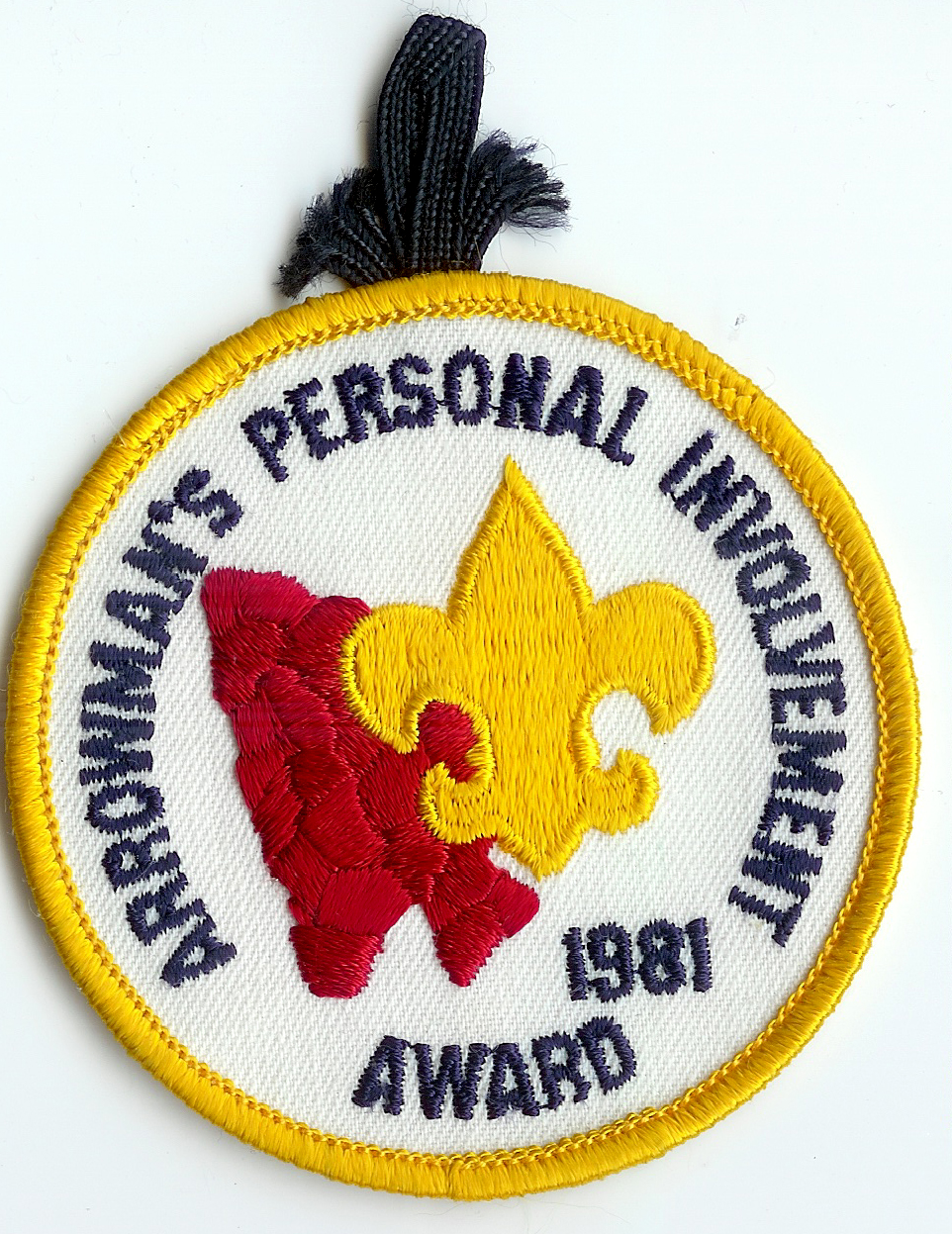
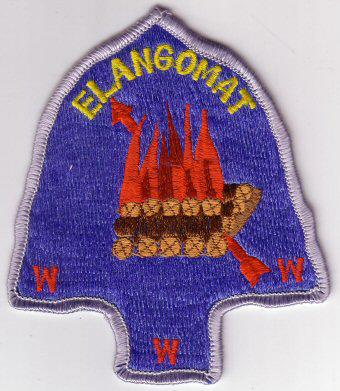 Following the presentation of the optional
Following the presentation of the optional  The opening show was a spectacular that featured twenty-four hundred Scouts acting out “America’s Heritage” from colonial times to the present. Patrol activities became standard and for the first time, schedules of patrol activities were computerized. On arriving at the jamboree, each troop received a computer printout of the activities available to its patrols, and activity tickets to go with them.
The opening show was a spectacular that featured twenty-four hundred Scouts acting out “America’s Heritage” from colonial times to the present. Patrol activities became standard and for the first time, schedules of patrol activities were computerized. On arriving at the jamboree, each troop received a computer printout of the activities available to its patrols, and activity tickets to go with them.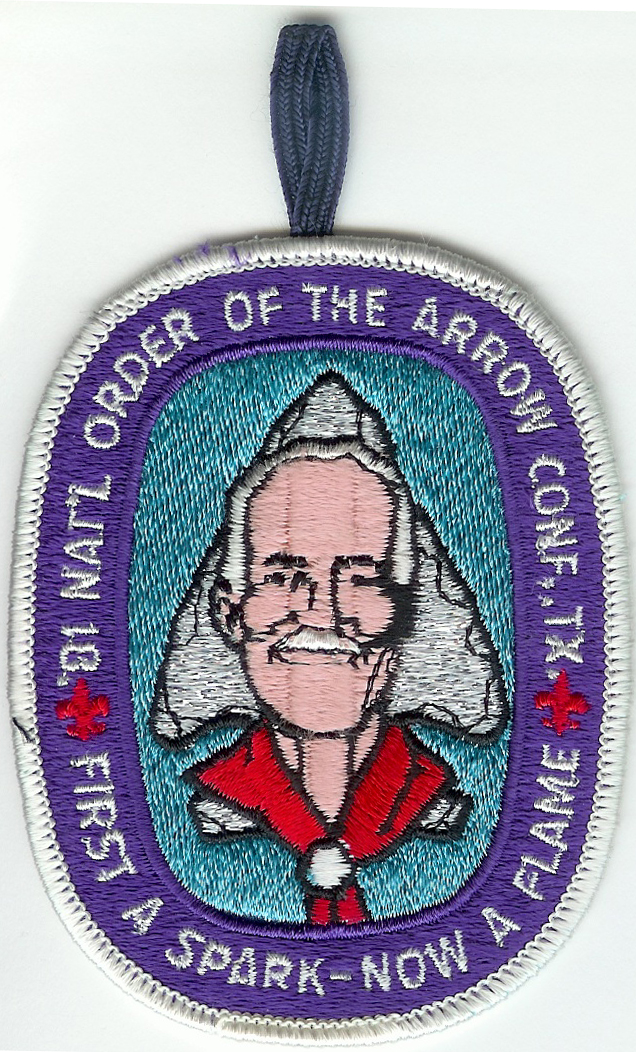
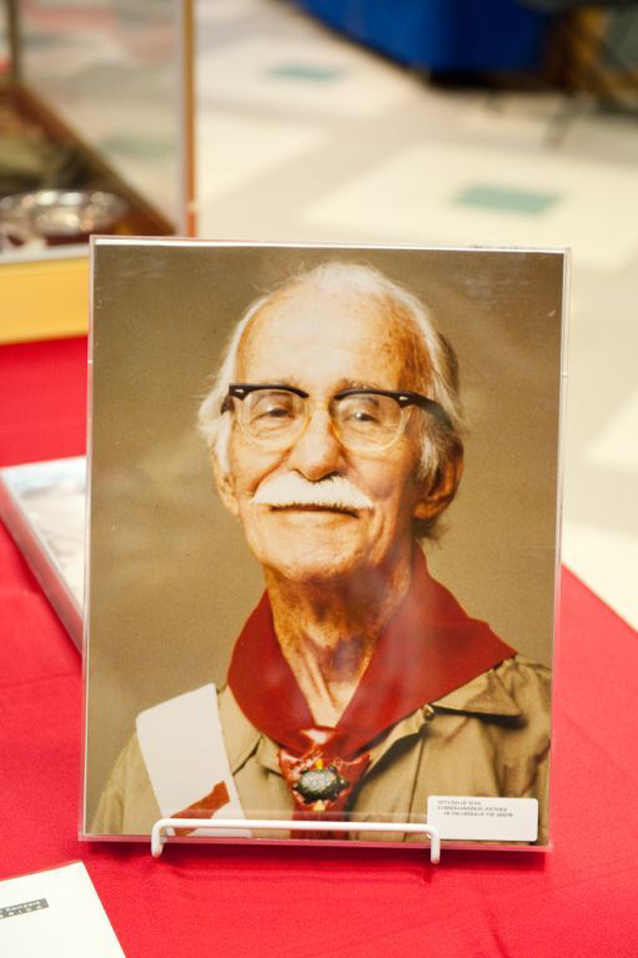 .
.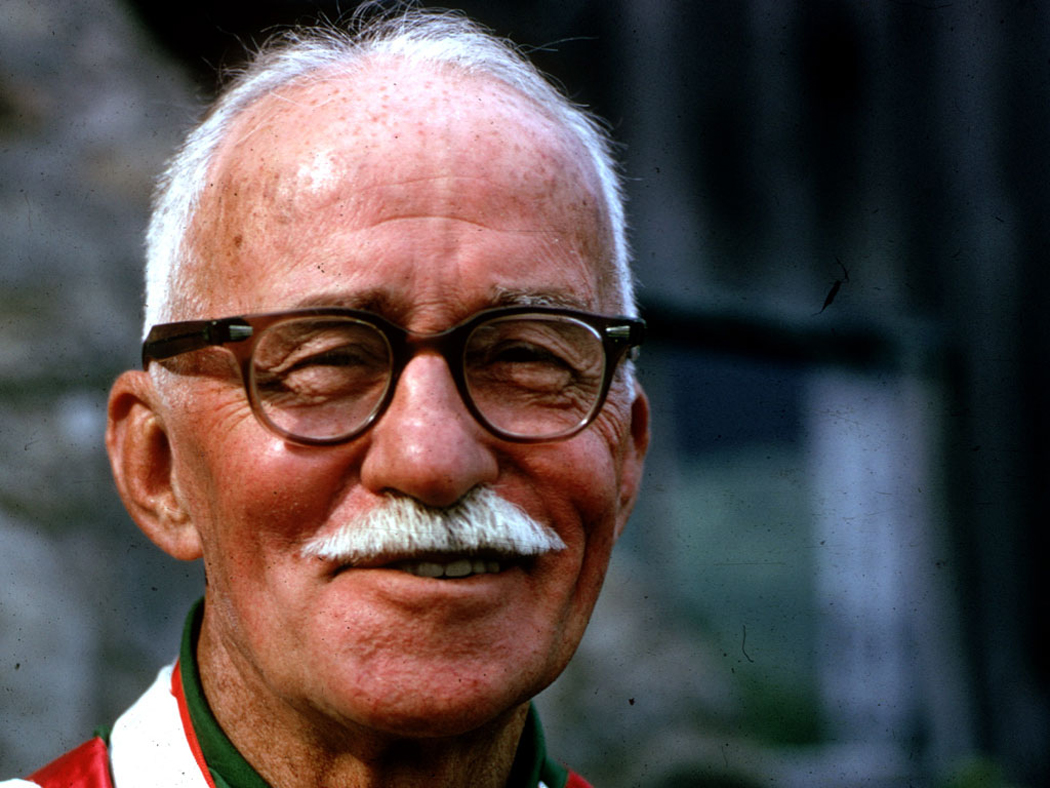 He planned his own funeral to include lots of music. It took place at Penney Farms on March 29. National Chief Jeffrie A. Herrmann and
He planned his own funeral to include lots of music. It took place at Penney Farms on March 29. National Chief Jeffrie A. Herrmann and  Like the hero of
Like the hero of